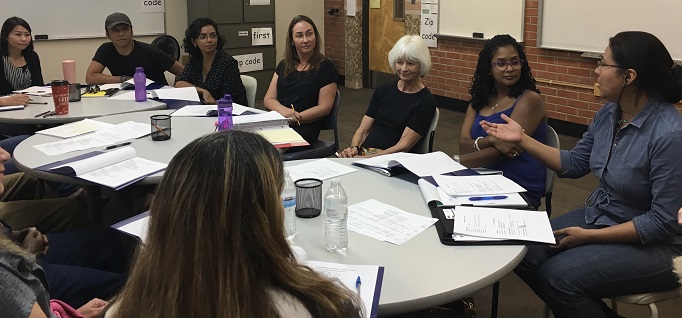Coming together to serve immigrant students
By Heather Boerner
November 27, 2018
A program at an Arizona community college helps immigrant students navigate the hidden systems of workplace culture.
A few years ago, Pima Community College (PCC) in Arizona worked with a local jobs organization, JobPath, on a program that linked new American professionals to the industries that needed them.
But when the Congressional earmark for the program ended in 2015 and nothing appeared to fill the gap, PCC and JobPath considered its future.
Regina Suitt, Pima’s vice president of adult basic education for college and career and developmental education, noticed the workforce needs, of course. But she also noticed another potential workforce.
“We have a lot of retirees in Tucson from all walks of life, including the University of Arizona,” Suitt says.
These, she realized, could be the resource that could keep the program going.
She was right. Nearly three years later, the program has evolved into a single, free course called Transition to Jobs. The curriculum was designed by volunteers and is taught by volunteers, many of whom have connections with local industry that can help students.
Most immigrants and refugees have to work to survive. For refugees, it’s even more important because, amidst all the trauma of fleeing one’s country, once a refugee has status, they have to find a job in six months, Suitt says.
“It’s a pretty hard lift, even for the most seasoned professional,” she says. “Of course, they think, ‘I’ll just work in the same field as before.’”
These are the dentists, the teachers and the one-time business owners who are new to the U.S. They have a lot to offer, but first they have to master the “hidden systems” of workplace culture, Suitt says. They may need to get their degrees translated to something American professional groups recognize, or they may need to learn to write a different resume for every application. And they almost universally don’t expect to have to sell themselves in an interview.
“They will say to us, ‘Why did they ask me about my education? It says it right here that I’m fully trained,’” Suitt says. “We work on helping them navigate systems in America.”
Today, the program has a handful of volunteers specifically working on the Transition to Jobs program. One of the only program expenses is an immigrant navigator, similar to other navigators on campus, but serving as the point person for English-language learners and immigrants receiving retraining at the college.
“Many colleges may not be aware of community organizations that serve immigrants and refugees so they may not utilize them to help support their students,” Suitt says. “That may be local workforce organizations, one stops, churches or other community-based programs.”
This is an excerpt from an upcoming Community College Journal article. Check your mailboxes in December for more on this topic!



